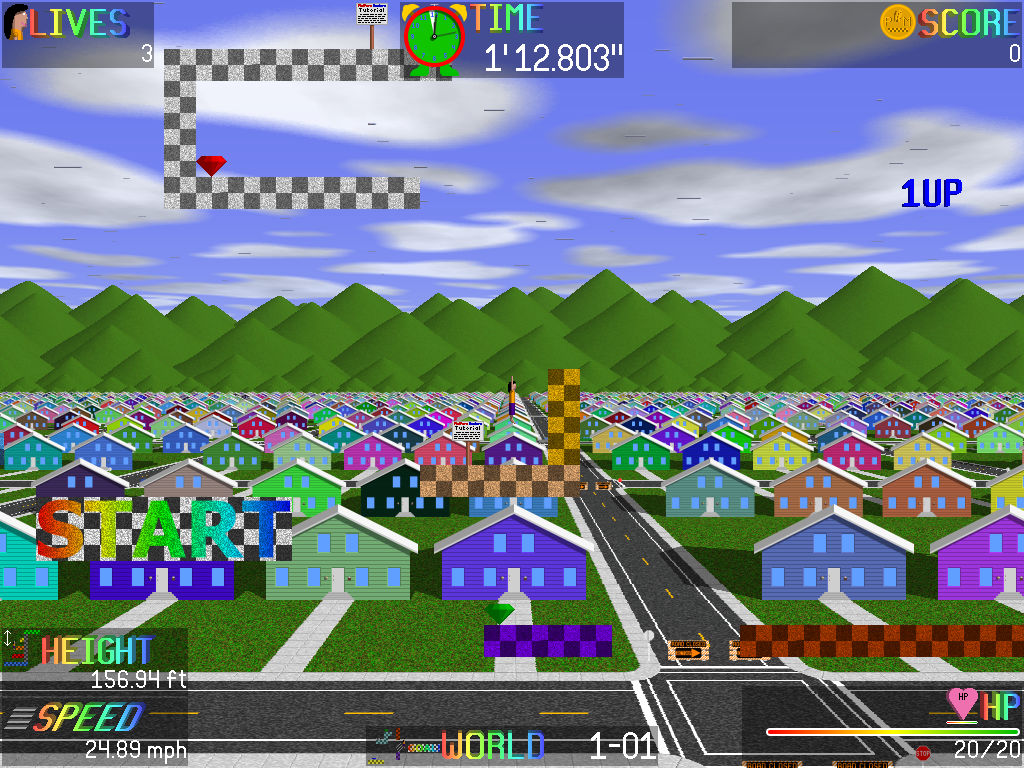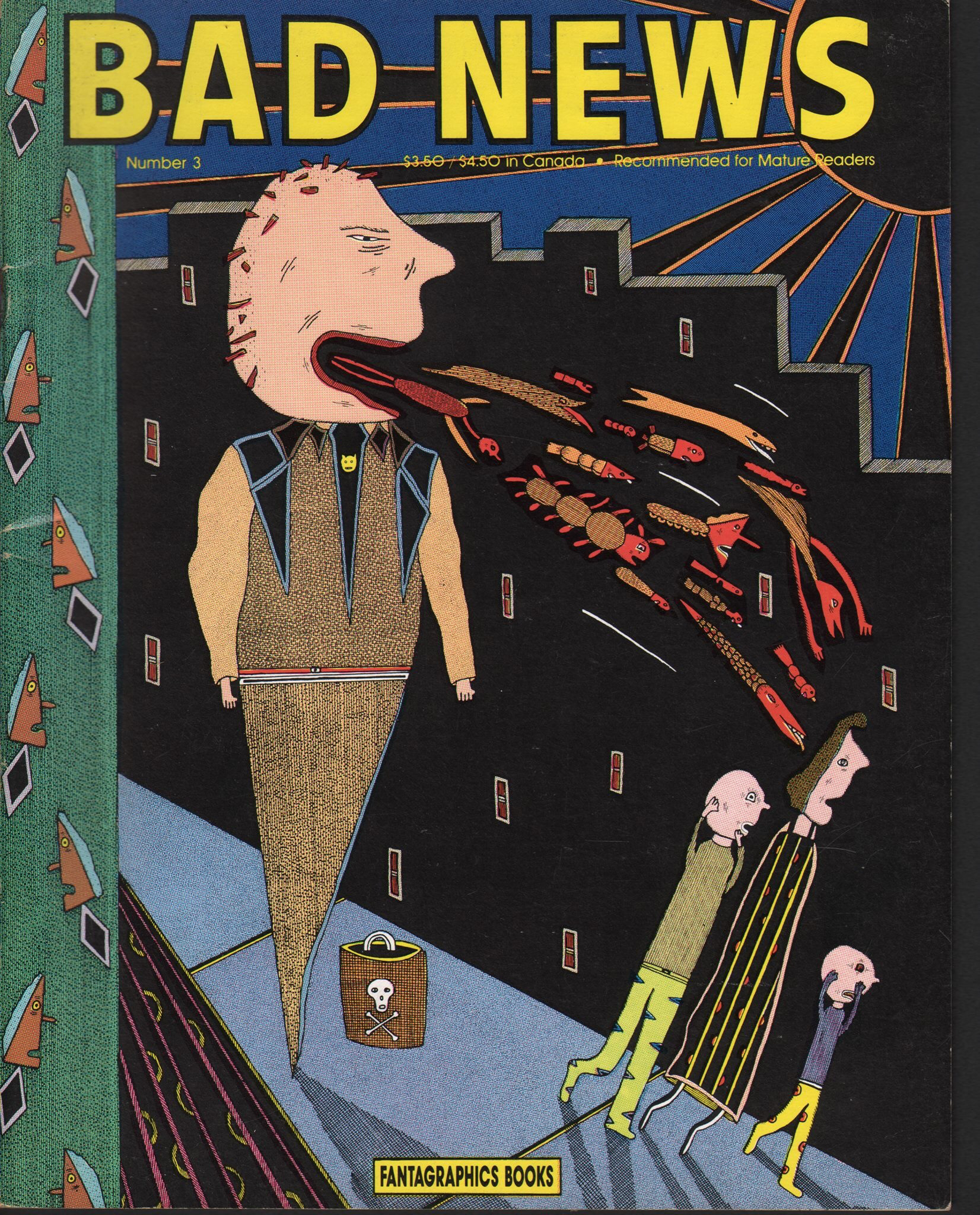
1. Book Covers
My first encounters with art were though book and album covers, comics, and posters. I would always select what to read, watch, or listen to based on the cover. Some of my favorite images remain the sci-fi book covers of the 1960s and ’70s that you could get cheap from used bookstores. They were windows into universes infinitely bigger than the small New Zealand town I grew up in.

2. Fletcher Hanks was a tortured comic book auteur whose flame burned brightly for only two years, from 1939 to 1941. He wrote and drew stories detailing the adventures of all-powerful supernatural heroes who enacted elaborate punishments upon their enemies. Apparently he was a very angry man, which you can see in the simmering tension of many of his images.
Videos by VICE

3. Platform Masters
Nick Smith is a game developer and elusive internet figure who goes by the handle of Ulillillia. He’s the creator of the game Platform Masters, the most complex 2D game ever made. It’s comprised of three hundred-plus levels over twenty worlds, and uses parallax scrolling to appear three-dimensional. Its an unfinished masterpiece, and is probably doomed to remain that way since Nick has committed himself to endlessly improving the detail.

4. Ernst Haeckel
The geometric shapes and natural forms in Ernst Haekel’s Artforms In Nature have been a constant reference for me. I look at them when drawing my alien demigods and other creatures from their realm. You don’t have to look very far in nature to find the most beautifully grotesque facial forms, with which these bats are particularly blessed.
5. Chris Foss is known for illustrating book covers from the 1970s through to the ’90s. He most often depicted epic interstellar spaceships of monumental mass. Alejandro Jodorowsky employed him as a concept designer for his notorious, never-realized Dune adaptation, and he later worked on Ridley Scotts spaceship in Alien. Essentially, he had his hand in many of my favorite things.

6. Mark Beyer
I first came across Mark Beyer’s artwork in his 1980s comic strip Amy & Jordan. I became stupidly obsessed with it and copied him stylistically for a long time until I finally found my own thing. A few years back, he e-mailed me out of nowhere; I nearly had a heart attack when I saw his name. It turned out an Australian friend had sent him a book in Albuquerque, and inside the book was a random postcard. The postcard featured one of my drawings and he had looked me up. When I read his message I was sitting across from an original Amy & Jordan drawing and I felt that weird contracting thing happen, when the world suddenly feels very, very small.

7. Henriette Valium is a French Canadian comic book artist and painter who was prominent in the underground comics scene of the early 1980s. His drawings lean toward Punk aesthetics, and explore themes of decay, sickness, and addiction. The complexity of the drawings creates an immersive chaotic environment that can feel like an impenetrable wall. Valium works for several months on each page, and the feeling I get when looking at his work is similar to when I’ve gone super deep down into one of my own wormholes.

8. Allegory of the Five Obstinate Monsters, 1575–1618, Anon
I look at a lot of historical work, more so than contemporary art. I especially like illustrations like these from the early modern period where artists depicted scenes and creatures from imagined distant lands. During this period there was also a heightened anxiety about violent religious conflict and apocalyptic threats, which comes through in the imagery.
9. Jack Kirby
Jack Kirby was one of the most influential, innovative, and prolific comic book creators of all time. His innovation wasn’t just confined to his cosmic drawing style; he also experimented with mixed media and photocollage. I often use bits of Jack Kirby collage in my own work. I like the idea of being able to peer through the cracks in my drawings to glimpse his world.

10. Killian Eng
My drawings often have a foundational layer of symmetry; that’s something I’m attracted to in the graphic work of Killian Eng. He often does commercial work for films and album covers, and his posters have really striking and seductive compositions. I like how quietly optimistic they are; they’re rather calming.

11. Sascha Braunig
Every time I see one of Sascha Braunig’s paintings I feel a ping in my head. They seem to come from so deep inside her that they’re almost claustrophobic. It’s really rare to get such a visceral reaction just from looking at art. Sometimes I imagine that she’s swiveled her eyeballs 180 degrees so that they’re staring at the inside of her skull, and is painting what her tangled brain looks like nestled in its dome.
12. Moebius
What I like most about Moebius is his ability to make you feel small and insignificant within a vast universe. That’s a really difficult thing to do with a flat, static image. Apparently he was profoundly influenced by the Mexican desertscape in which he lived for a time after art school. You get a sense of this in his most iconic images, which show tiny characters traversing unending flat planes beneath blue skies.
Jess Johnson‘s exhibition Everything not saved will be lost is on view at Jack Hanley Gallery, New York, until October 8.
More
From VICE
-

(Photo by Bryan Bedder/Getty Images) -

Screenshot: Ubisoft -

Isabel Pavia/Getty Images

